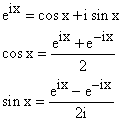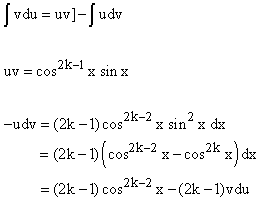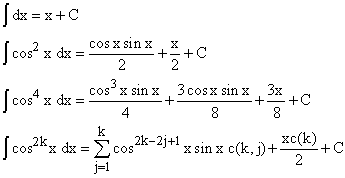|
||
|
|
||
|
We can integrate such polynomials term by term
If either m or n is odd, we can make a trigonometric substitution to reduce I's integral to that of a polynomial;
suppose m is odd = 2k+1
then writing
![]() ,
,
we get
![]()
which can be expanded and the result integrated term by term using the product rule.
If both m and n are even, there are three different approaches that can be used to integrate I.
Suggested method
Use the identities

to reduce I to a polynomial of degree (m + n) / 2 in cos2x; the odd terms of this polynomial can be integrated by the previous method, the even terms reduced to a polynomial of degree at most (m + n) / 4 in cos4x, and so on.
Alternate method I: Demoivre
Use DeMoivre's theorem:

to reduce I to a sum of imaginary exponential which can be integrated like any other exponentials and then regrouped to form sines and cosines again; or regrouped into sines and cosines and then integrated.
Alternate method II: Integrating by parts
Integrate by parts to reduce the integrand from cos2kx to cos2k-2x.
You can deduce an ugly formula for ![]() from the resulting relation.
from the resulting relation.
du = cosxdx; v = cos2k-1x
u = sinx; dv = -(2k-1)cos2k-2xsinxdx

Therefore on iding by 2k, we get

Formulae
The formula obtained in the last method

gives rise to the following results:

where
